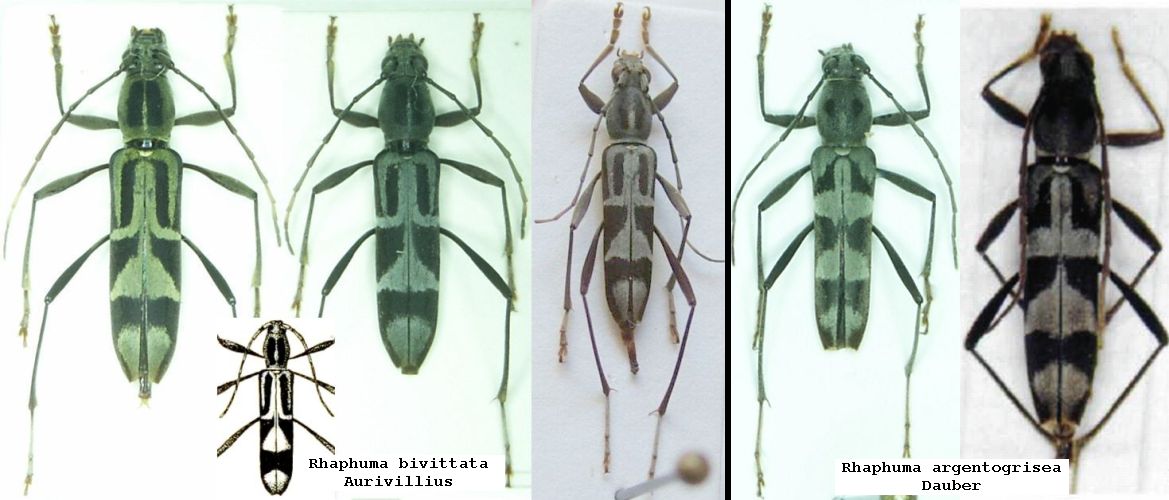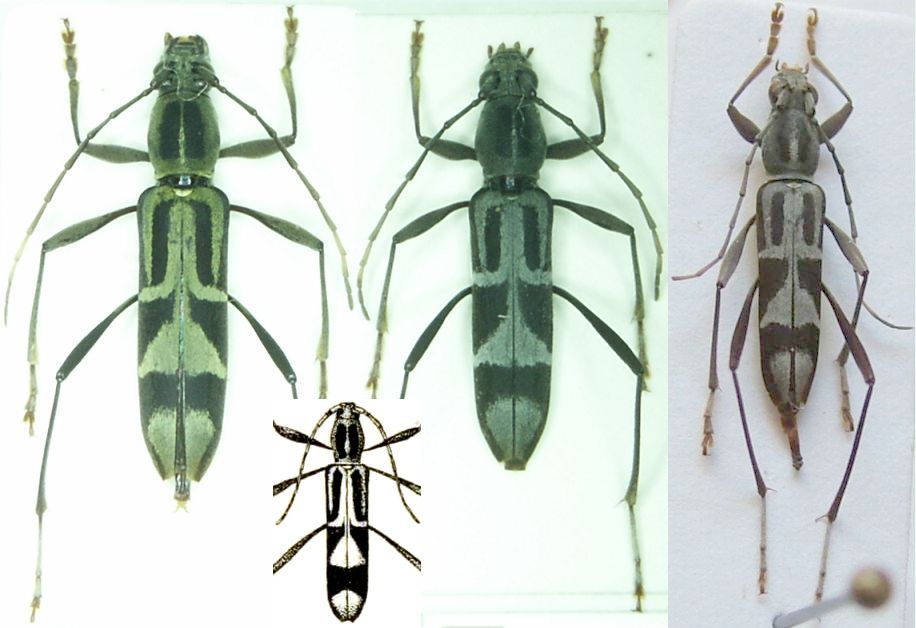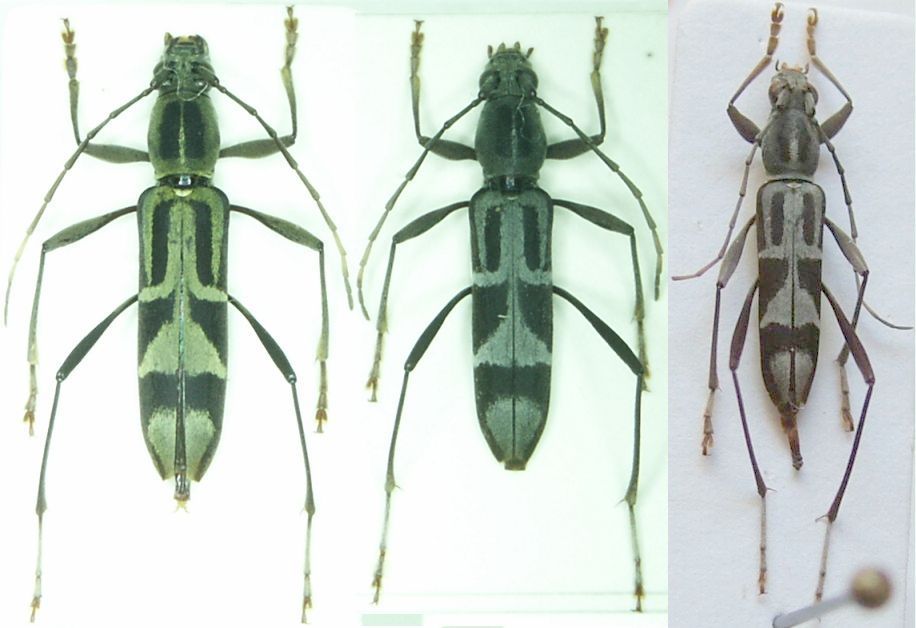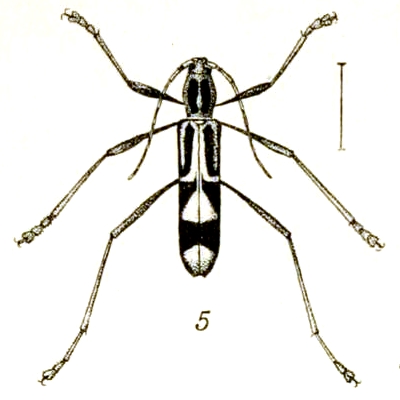| T O P I C R E V I E W |
| Gyula |
Posted - 05/10/2011 : 18:36:09

bonjour,
Borneo, 12 mm.
merci.. |
| 7 L A T E S T R E P L I E S (Newest First) |
| Robert |
Posted - 02/11/2011 : 02:37:01

Bonjour Francesco,
La photo dans l'article de Dauber est trop foncée. Je joint la photo de Dauber ainsi qu'une photo d'un argentogrisea de ma collection aux côtés de la photo déjà postée sur ce topic.
Chez argentogrisea, la bande noire du haut des élytres, en plus d'être plus courte, va en s'élargissant vers le bas, ce qui lui donne l'aspect d'un triangle. On ne voit pas ça du tout chez bivittata.
On voit mal sur la photo de Dauber, mais sur mon spécimen les taches pronotales sont nettement rondes. |
| Francesco |
Posted - 01/11/2011 : 18:12:01
Dear Robert, I have found in this paper a Rhaphuma argentogrisea Dauber, 2003 from Borneo.
Do you think it might be a melanic variation of this species?
Curiously, R. bivittata is not mentioned in the differential diagnosis… |
| Francesco |
Posted - 09/10/2011 : 08:57:11
Wonderful reportage Robert, thank you! 
I remember to have some similar Rhaphuma-specimens from Cameron Highlands and Fraser's Hill (Malaysia) that might constitute an analogue series.
I agree with you concerning the pronotal pattern. I also notice some nuances in the colour of the pattern (yellowish to grey) but this seems to me a marginal variation. |
| Robert |
Posted - 09/10/2011 : 06:03:26

I added the original drawing. |
| Robert |
Posted - 09/10/2011 : 05:19:54

Hi Francesco. There are species in Rhaphuma and Demonax that are quite variable.
I have had series of many species belonging to those 2 genera from Borneo, and although some of them are more consistent regarding their patterns, some others are not.
More likely than not Gyula's specimen is bivittata. I took a picture of 2 bivittata specimens from my collection, you can compare the patterns.
The most noticeable difference, the one that made me hesitate, is the width of the line dividing the black spot on the pronotum. I guess this can be variable as well. |
| Francesco |
Posted - 06/10/2011 : 22:23:00

Here Rhaphuma bivittata, I am not sure that it is the same species: Demonax and Rhaphuma have usually constant pattern... |
| Robert |
Posted - 05/10/2011 : 18:57:56
Ressemble à Rhaphuma bivittata Aurivillius, 1916 ... |


